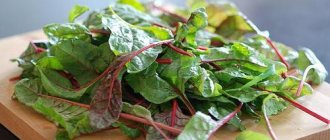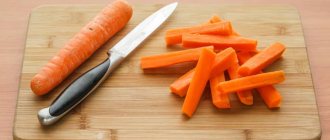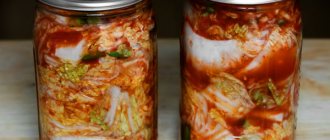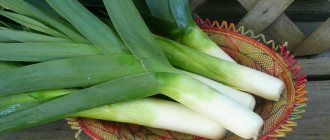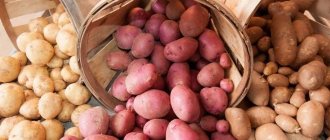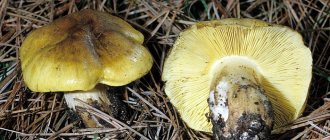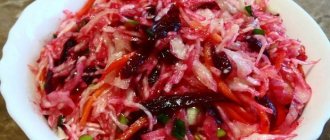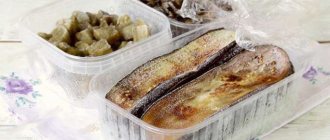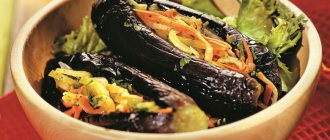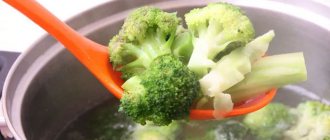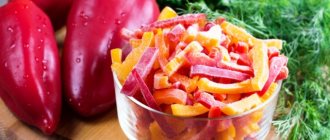Composition and benefits of beet tops
Beet leaves help maintain health and replenish vitamin and mineral deficiencies - and this is all thanks to their unique chemical composition.
Table of vitamin and mineral composition:
| Name | Content | Norm |
| Vitamin A | 383 mcg | 900 mcg |
| Beta carotene | 4.59 mg | 5 mg |
| Vitamin B1 | 0.117 mg | 1.5 g |
| Vitamin B2 | 0.289 mg | 1.8 mg |
| Vitamin B4 | 0.5 mg | 500 mg |
| Vitamin B5 | 0.329 mg | 5 mg |
| Vitamin B6 | 0.132 mg | 2 mg |
| Vitamin B9 | 14 mcg | 400 mcg |
| Vitamin C | 24.9 mg | 90 mg |
| Vitamin E | 1.81 mg | 15 mg |
| Vitamin K | 484 mcg | 120 mcg |
| Vitamin PP | 0.499 mg | 20 mg |
| Potassium | 909 mg | 2500 mg |
| Calcium | 114 mg | 1000 mg |
| Magnesium | 68 mg | 400 mg |
| Sodium | 241 mg | 1300 mg |
| Phosphorus | 41 mg | 800 mg |
| Iron | 1.9 mg | 18 mg |
| Manganese | 0.514 mg | 2 mg |
| Copper | 251 mcg | 1000 mcg |
| Selenium | 0.9 mcg | 55 mcg |
| Zinc | 0.5 mg | 12 mg |
Nutritional value of beet tops (per 100 g):
- calorie content – 27 kcal;
- proteins – 2.6 g;
- fats – 0.2 g;
- carbohydrates – 2.6 g;
- fiber – 2.9 g;
- water – 89.13 g.
The rich chemical composition of beet leaves has a beneficial effect on the body when consumed regularly:
- normalizes metabolism and blood sugar levels, which is especially important for diabetics;
- cleanses the blood and ducts of blood vessels from cholesterol plaques;
- increases hemoglobin levels;
- reduces the risk of stroke, heart attack, pathologies of veins, arteries and heart muscle;
- promotes weight loss;
- improves concentration;
- minimizes the risk of developing fetal neural tube pathologies;
- destroys and removes free radicals;
- regulates intestinal function due to fiber;
- replenishes the supply of vitamins, micro- and macroelements;
- stops the deterioration of vision.
Harm and contraindications
Beet tops contain large quantities of oxalic acid. When reacting with minerals, compounds are formed that accumulate in tissues and are difficult to remove from the body. This provokes the development of urolithiasis.
Doctors recommend approaching the use of beet leaves from a rational point of view, taking into account the stage of the disease. Drinking plenty of fluids helps reduce the harmful effects of oxalic acid.
Direct contraindications include:
- bleeding disorders and taking anticoagulants (vitamin K greatly thins the blood);
- pathologies of the kidneys and gallbladder;
- chronic diarrhea;
- pancreatitis;
- liver cirrhosis, hepatitis;
- low blood pressure.
Storage options
The following methods help preserve beet tops for the winter:
- canning;
- pickling;
- drying;
- freezing;
- fermentation.
Heat treatment slightly reduces the amount of vitamins and minerals. Freshly frozen, dried and pickled tops are considered the most useful.
Leaves pickled in vinegar keep in the pantry for a long time. They are used as a savory addition to meat, fish, cereals and vegetables.
Canning
The fastest and least labor-intensive way to prepare leaves in jars is five-minute preservation:
- Wash the beet leaves, finely chop them, place them in a saucepan, add salt and cover with cold water.
- Bring to a boil and cook for 5 minutes.
- Place in clean jars and seal.
- Store in the cellar.
Pickling
You can pickle both leaves and petioles of beets, but their processing will be different.
The petioles are prepared using the triple-pouring method: the hot marinade is poured, drained, boiled and re-poured three times.
The leaves are prepared by sterilization: the hot marinade is poured into jars and boiled for 5 minutes. Cover the blanks with lids, turn them over and wrap them in a blanket.
Drying
Beet leaves contain practically no essential oils, so they can be dried immediately after cutting. For this purpose, use an oven, dehydrator or electric dryer. Drying temperature – no more than 60°C.
Dried tops are used in folk medicine to treat constipation, headaches and mastitis.
Reference. It is not recommended to dry the tops under the sun: the leaves lose all their beneficial substances.
Freezing
One of the best ways to preserve greens for the winter without losing useful components:
- Wash the leaves, dry and finely chop.
- Place into freezer bags in small portions.
- Place in the freezer.
Advice. Do not re-freeze as the product loses its beneficial properties.
Pickling
Beet tops, fermented without vinegar, have a wonderful taste and a lot of useful properties. Moreover, its chemical composition multiplies several times. It can be stored for a long time and not spoil. Fermented foods speed up metabolism and the digestion process by normalizing intestinal microflora.
Drying and freezing
The aboveground part of the popular culture consists of wide, powerful leaf blades “sitting” on long, succulent stems (petioles). Essentially, these are two different products that can be added to first and second courses, salads and even pie fillings. Every housewife uses those methods of preparing beet leaves for the winter that correspond to her plans and are suitable for subsequent preparation of dishes loved by family members. The easiest ways to preserve the product are drying and freezing.
When choosing recipes for preparing beet tops for the winter, you must take into account that the leaf blades soften much faster during heat treatment than the petioles. Therefore, they are advised to be prepared and stored separately from each other.
Greens intended for storage are often cut into small pieces, but leaf blades are sometimes frozen entirely: in winter they are used to prepare delicious cabbage rolls, which are in no way inferior to traditional cabbage rolls. Dry the tops in any available way: in the air, in a low-heat oven or a special dryer. For freezing, the cuttings and leaves are laid out in small portions in plastic bags (tightly, trying to remove excess air). Dried beet greens in a tightly closed container retain their taste and aroma throughout the year; frozen - until the next gardening season.
How to properly store workpieces
Rules for storing beet tops depend on the harvesting method:
- Pickled and canned ones are kept in the refrigerator or cellar.
- The dried ones are placed in paper bags or linen bags and hidden in a dark place.
- Frozen leaves are stored at temperatures from -5°C to -20°C. The lower the temperature, the longer the shelf life, on average 10 months.
- Tops pickled with vinegar are stored in the pantry or taken to the basement for safety.
Recipes for the winter
The most popular methods for preparing beet leaves include fermentation and pickling. Let's talk about the features of each of them in more detail. Even novice cooks will not have any difficulties in cooking.
Pickled tops
Ingredients:
- beet tops – 1 kg;
- garlic – 30 g;
- dill umbrellas – 2 pcs.;
- black currant or cherry leaves - 3 pcs.;
- salt – 2 teaspoons.
Preparation:
- Wash the beet leaves, dry and chop coarsely.
- Place in layers in a clean container for fermentation, topped with chopped garlic, currant leaves and dill. Sprinkle each layer with salt.
- Place pressure on top.
- Keep at room temperature for three days.
- Take the workpiece to a cool place for storage.
Pickled tops
Ingredients:
- beet tops – 1 kg;
- apple cider vinegar – 120 ml;
- salt – 35 g;
- clean water – 1.5 l;
- black or allspice, bay leaf, dill umbrellas - to taste.
Preparation:
- Wash the leaves, chop coarsely and place in a clean container.
- Prepare a marinade from water, salt, spices, dill and vinegar.
- Strain and pour over the beet leaves.
- Place the container in a water bath and pasteurize for 15 minutes.
- Close with airtight lids and store in the cellar.
Preparing the main ingredients
For salads and fresh use of tops, it is recommended to collect early leaves, as they become tough during the harvest period. The workpiece can also be made from late tops, but in order to soften it, heat treatment is carried out. For harvesting, choose cloudy weather without rain. If the vegetables were fed with nitrates, then it is necessary to cut off 5 centimeters of the cuttings at the base, this is where their accumulation is observed.
After collection, the leaves are thoroughly washed, excess debris and greens with obvious signs of damage are removed. To make the process easier, you can put the tops in a bowl of water for a couple of minutes; all small specks and light foreign objects will float up, so they can be easily removed.
Read also: Beautiful designs of garden plots
Recipes for dishes with beet leaves
Beetroot tops are used to prepare many dishes familiar to us: soups, salads, cabbage rolls, dumplings, Ossetian pies. We have selected several popular and simple recipes.
Stuffed cabbage rolls
Ingredients:
- medium-sized beet leaves;
- minced meat – 600 g;
- long grain rice – 400 g;
- carrots – 2 pcs. (medium size);
- onion – 1 pc. (big);
- tomato paste – 3 tbsp. spoons;
- sour cream – 150 ml;
- salt, spices - to taste;
- sunflower oil for frying onions and carrots.
Preparation:
- Grate the carrots on a coarse grater, cut the onion into small cubes and lightly fry in oil.
- Boil the rice until half cooked, cool and mix with the minced meat.
- Add sautéed vegetables, salt and pepper to taste.
- Rinse the beet leaves under running water, remove the petioles and cut off the thick vein.
- Wrap the minced meat in each leaf, forming cabbage rolls.
- Place them tightly together in the pan.
- Make the dressing: mix sour cream with tomato paste, add salt and pour in hot water. Stir and pour over the cabbage rolls.
- Place a flat plate on top with a diameter smaller than the pan.
- Cover with a lid and simmer over low heat for about an hour.
Green salad
This salad is a real vitamin bomb.
Ingredients:
- tops - 1 bunch;
- wild garlic – 1 bunch;
- parsley and dill - 1 bunch each;
- cucumber – 1 pc.;
- paprika – 1 pc.;
- olive oil – 3 tbsp. spoons;
- apple cider vinegar – 1 tbsp. spoon;
- salt, black pepper - to taste.
Preparation:
- Wash the greens, dry and finely chop.
- Chop the cucumber and pepper as desired.
- Mix the salad ingredients in a bowl, add salt, olive oil and vinegar.
- Let it brew and serve.
Soup
Ingredients:
- meat on the bones for broth;
- water – 3 l;
- beet leaves - 2 bunches;
- potatoes – 3 pcs.;
- carrots – 1 pc.;
- onion – 1 pc.;
- vegetable oil – 2 tbsp. spoons;
- herbs, salt, spices - to taste.
Preparation:
- Rinse the meat and cover with water. Cook over low heat and skim off foam periodically. For pork, two hours of cooking is enough, for beef - three.
- Cut the potatoes into cubes or strips and soak in cold water. Grate the carrots and finely chop the onion. Sauté in vegetable oil until soft.
- Wash the beet leaves and finely chop them along with the petioles.
- Remove the meat and add the potatoes to the broth. Cook for 5-7 minutes, then add beet tops and sautéed vegetables.
- At the end of cooking, add salt, pepper and herbs. Serve with sour cream.
Dressing for borscht
Ingredients:
- beets – 1 kg;
- tops – 1 kg;
- onion – 1 kg;
- carrots – 1 kg;
- tomatoes – 1 kg;
- sugar and salt - to taste;
- vinegar 9% – 50 ml;
- refined oil – 3 tbsp. spoons.
Preparation:
- Grate the beets and carrots on a coarse grater or cut into strips.
- Chop the onions and tomatoes into medium cubes.
- Finely chop the washed tops.
- Pour oil into a thick-bottomed pan and add carrots. After 2-3 minutes, add the onion and sauté until soft.
- Add the beets, stir and pour in 200 ml of boiling water. Cover the pan with a lid and simmer the vegetables for 15 minutes.
- Add topstalks, tomatoes, 1 tbsp. spoon of sugar and salt. Stir and simmer for another 15 minutes.
- Taste the dressing and add vinegar, sugar and salt. Add beet leaves, stir and bring to a boil.
- Place the dressing in sterile containers and close the lids.
- Store in a cool place.
Reference. You can not use the root vegetable, but cook it only with beet leaves. The ingredients for refueling will be the same.
Borscht based on dressing
Ingredients:
- boiled water – 3 l;
- borscht dressing with beet tops – 500 ml;
- potatoes – 4 pcs.;
- salt, pepper, herbs - to taste;
- sour cream for serving;
- boiled eggs.
Dressing with beet leaves significantly reduces the cooking time of borscht. All that remains is to add chopped potatoes, salt and pepper to taste. Place greens, a tablespoon of sour cream and a boiled egg on each plate, if desired.
The total cooking time takes no more than 15-20 minutes, since the vegetables in the dressing are completely cooked.
If you are preparing borscht based on a dressing without beets, grate the root vegetable separately and add to the pan 10 minutes after the potatoes.
Advice. During the young beet season, prepare borscht from fresh ingredients. Instead of vinegar, use lemon juice.
Preparing beets for freezing
Beets are frozen both raw and boiled. But in any case, beets intended for freezing must be without flaws. The root crop should be smooth, strong, and dark burgundy in color.
You should not freeze very large beets, as well as those with a lot of hairs (thin roots) on the tail. It is believed that such beets are very hard, which can affect the quality of frozen products.
- The base of the beet tops is cut off, leaving part of the tail.
- Root vegetables are thoroughly washed with a brush.
There are many recipes for frozen beets, but in any case, for long-term storage, the vegetable must be properly prepared. First of all, you need to select root crops suitable for harvesting for the winter.
Only young, fresh, firm, fully ripe and preferably not very large specimens of a dark burgundy color, without the slightest signs of lesions, rotting or other defects, are definitely suitable for these purposes.
Important! Early varieties of beets do not have very high taste qualities; their cultivation has another goal - to saturate the market after a long period of vitamin deficiency. These beets are not suitable for freezing!
In addition, you should avoid using root vegetables that have hairs on the surface for freezing; these vegetables are usually too tough.
We cut the selected beets from both sides: where the tops were - under the base, the lower side - leaving part of the spout.
Wash thoroughly with cold water and thoroughly clean with a brush. Now all that remains is to remove the peel, trying to grab only the very top layer with a knife (it is better to use a potato peeler, the so-called “housekeeper” instead of a knife).
The preliminary procedures have been completed, now we act depending on the chosen harvesting method.
You can freeze root vegetables raw or boiled, and you can even prepare tops separately for the winter. Before harvesting, be sure to select strong, dark-burgundy-colored vegetables with no signs of rotting, spoilage, or cracks in the skin. Avoid large vegetables as they may be tough after defrosting.
Before harvesting, wash the root crop, cut off the tops, roots and peel the skin. Rinse the vegetable again and dry.
Frozen vegetable
The freezer is covered with a thick layer of ice - it requires urgent defrosting. It is better to carry out this process before freezing the fruit.
After defrosting, rinse with a water-soda solution and wipe with a dry cloth. If possible, let it sit for three days. After this, you can proceed to preparing products. It is important to preserve the neighborhood. Vegetables and fruits should be frozen separately from meat.
We suggest you read: Is it possible to drip ethyl alcohol into the ear?
Tips and tricks
Take note of a few tips on choosing, storing for future use and preparing dishes from beet tops:
- Try not to buy already cut tops, but take root vegetables with herbs. This way you will receive a product with the most beneficial composition.
- Choose fresh leaves that are bright green and show no signs of wilting.
- Cut the tops 2 cm below the root crop.
- Before use, rinse the sand and soil thoroughly under running water.
- If you plan to store the tops in the refrigerator, do not wash them, just shake off the dirt and put them in a bag. The product spoils quickly, so do not keep it for more than four days.
- Use young leaves fresh. The old ones are suitable for preservation, fermentation and drying.
- Before use, soak large leaf tops in ice water for 10-15 minutes to remove the bitterness caused by oxalic acid.
- To get the maximum benefit, make a smoothie from the tops with the addition of vegetables and fruits.
Video
If you are interested in the topic of the article, we suggest you look at the recommendations of an experienced housewife about drying and freezing beet tops, as well as a television story about its beneficial properties:
Graduated from MGRI named after. Ordzhonikidze. My main specialty is a mining geophysicist, which means a person with an analytical mind and varied interests. I have my own house in the village (accordingly, I have experience in vegetable gardening, horticulture, mushroom growing, as well as fiddling with domestic animals and poultry). Freelancer, a perfectionist and a “borer” regarding his duties. Handmade lover, creator of exclusive jewelry made from stones and beads. A passionate admirer of the written word and a reverent observer of everything that lives and breathes.
